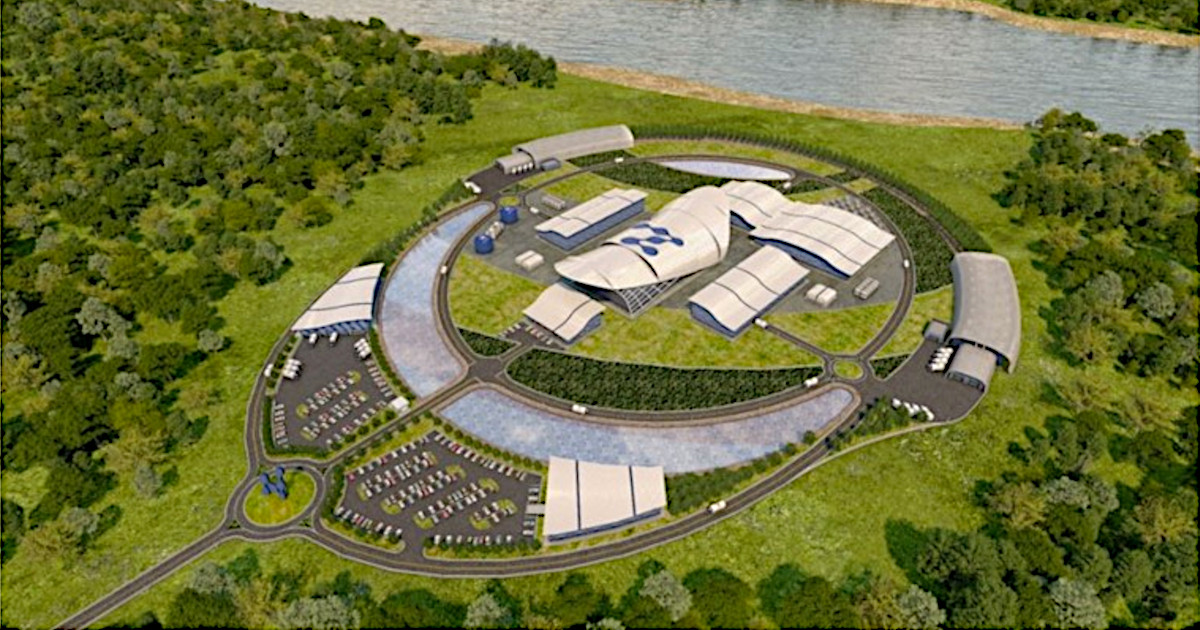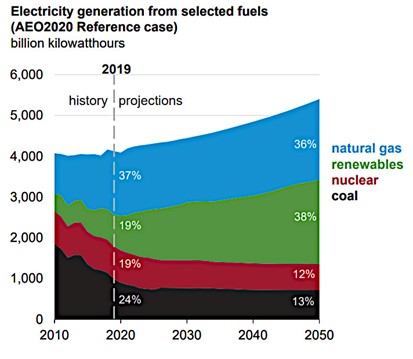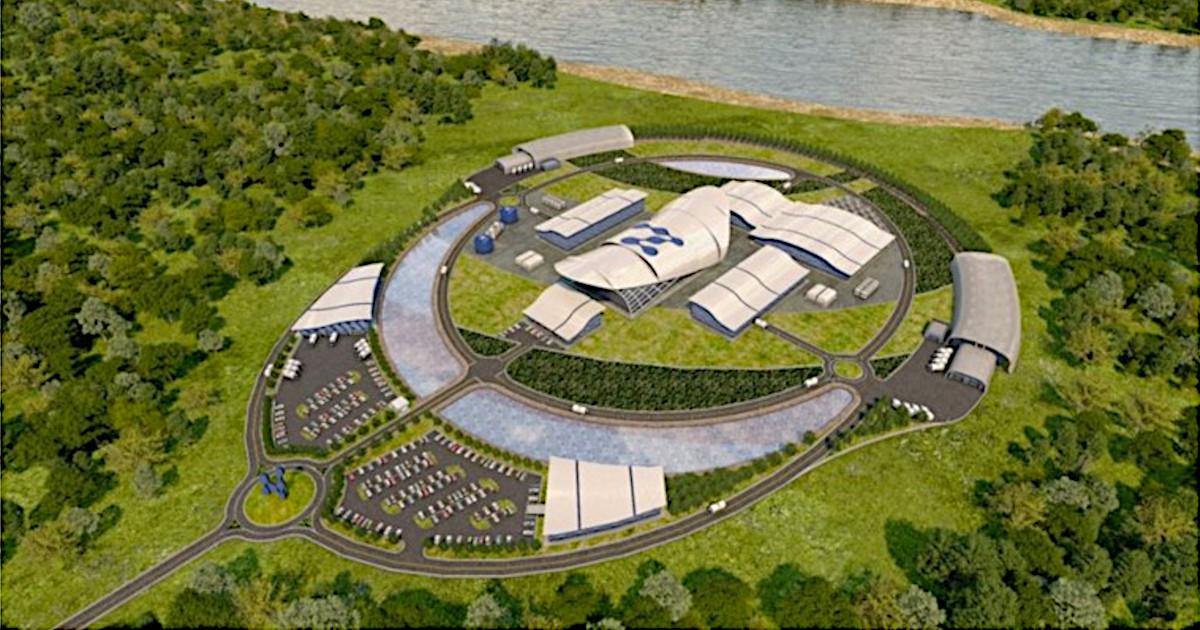
The First U.S. Small Modular Reactor Design is Sign of the Future for Nuclear Energy
Advancements in nuclear energy will keep it relevant for the foreseeable future. But, cleaner forms of energy are expected to take a larger share of electricity production. According to the U.S. Energy Information Administration’s Annual Energy Outlook 2020, the pivot to greener forms of energy will cause coal-fired and nuclear-powered generation to lose share to renewable and natural gas-fired power sources.

Source: EIA Annual Energy Outlook 2020
Renewable energy’s share of electricity generation is estimated to rise from 19% in 2019 to 38% by 2050. Natural gas, which accounted for 37% in 2019, is expected to provide 36% in 2050. On the losing end, coal-fired and nuclear power generation account for 13% and 12% in 2050, respectively, compared to 24% and 19% in 2019. What the analysis does not consider is progress in nuclear energy technology and the potential for public policies that put a price on carbon emissions.
Major Objections to Nuclear Power
Objections to nuclear power generally center on three issues. First, large-scale nuclear plants are very costly, and there are no incentive systems in place to reward the generation of carbon-free electricity. Second, nuclear power plants generate nuclear waste in the form of radioactive spent fuel, which needs to be safely stored. Third, the potential for a nuclear meltdown, such as what happened at Three-Mile Island in the 1970s, is a risk that many find unacceptable. What may be surprising are the many advancements in technology that may help overcome deep-seated objections and cause policymakers and the public to re-think nuclear power’s value proposition.
On a bipartisan basis, Congress passed the Nuclear Energy Innovation Capabilities Act in 2018, which promotes public-private partnerships through the U.S. Department of Energy’s Gateway for Accelerated Innovation Nuclear program to accelerate the development of the next generation of nuclear reactors. In 2019, the Nuclear Energy Innovation and Modernization Act was signed into law, which requires the Nuclear Regulatory Commission to develop new processes for licensing nuclear reactors, including staged licensing of advanced nuclear reactors.
Modular Reactors May Be Part of the Solution
NuScale Power and TerraPower are just two examples of companies that are working to advance less-costly, smaller nuclear reactors that produce less nuclear waste and reduce the potential for an accident. NuScale Power, a privately held company, is developing a small modular reactor design using a safer, smaller, scalable version of pressurized water reactor technology. In September 2020, the U.S. Nuclear Regulatory Commission approved the design of NuScale’s small modular reactor which could portend a full design certification in 2021. Privately held TerraPower was founded by Mr. Bill Gates and is a nuclear reactor design company that is developing a class of nuclear reactors using new technologies, including the traveling wave reactor. By using depleted uranium as fuel, the new reactor type offers the potential to reduce nuclear waste, lowers cost, and eliminates the need for reprocessing. Small modular reactors could be paired with and act as a backup to intermittent renewable sources of energy.
Putting a Price on Carbon Emissions
According to the U.S. Department of Energy, nuclear power accounted for 20% of U.S. electric generation in 2019 and 55% of the carbon-free electricity produced. While the issue of nuclear power is controversial, policymakers would be wise to consider it as part of the solution for combatting climate change. While natural gas-fired power plants are thought to be a key part of the energy transition to cleaner energy, they still emit greenhouse gases. Putting a price on carbon emissions through cap and trade programs or a carbon tax could help level the playing field. Currently, utilities that produce energy with coal-fired or natural gas-fired power plants are not penalized for carbon emissions. Likewise, utilities that generate carbon-free energy with more costly nuclear plants are not rewarded. Either levying a direct carbon tax or establishing a market-based cap and trade program could remedy the existing inequity.
Conclusion
The chorus for cleaner energy is growing stronger. Proposed plans for a clean energy revolution calls for the U.S. to achieve a 100% clean energy economy to reach net-zero emissions no later than 2050. In order to accomplish this goal, the plan would seek to achieve a carbon pollution-free power sector by 2035. While renewables, including wind and solar, play a significant role, policymakers should consider the downsides to these sources of energy, including the issue of intermittency and their footprint. For example, in terms of power density, as measured by watts per square meter, nuclear has a smaller footprint than some renewables, including wind farms. According to the Nuclear Energy Institute, wind farms require up to 360 times as much land area to produce the same amount of electricity as a nuclear facility, while solar photovoltaic facilities required up to 75 times the land area. Besides killing birds, wind farms are unsightly, take up a lot of space, and decommissioned wind turbine blades are difficult to recycle and often end up in landfills. Advanced nuclear reactors could make a significant positive impact toward reaching U.S. and global climate targets between now and 2050. Based on the promise of advanced nuclear technologies, policymakers should also ensure the viability of the entire nuclear fuel supply chain, including domestic production of uranium.
Suggested Reading:
When Does OPEC Expect Oil Demand to Plateau?
Oil and Gas Price Ratio, Which Way is it Headed?
Is America’s Energy Dominance Relying on Immaculate Areas?

|
Virtual Road Show Series – Tuesday, November 10 @ 1pm ESTJoin Lineage Cell Therapeutics CEO, Brian Culley and CFO, Brandi Roberts for this exclusive corporate presentation, followed by a Q & A session moderated by Ahu Demir, Ph.D., Noble’s Biotechnology Analyst, featuring questions taken from the audience. Registration is free, but attendance is limited to 100. |
Sources:
Annual Energy Outlook 2020, U.S. Energy Information Administration, January 29, 2020.
5 Fast Facts About Nuclear Energy, U.S. Department of Energy, Office of Nuclear Energy,
TerraPower, Corporate Website, 2020.
NuScale, Corporate Website, 2020.
NRC Approves First U.S. Small Modular Reactor Design, Press Release, Department of Energy, Office of Nuclear Energy, September 2, 2020.
First U.S. Small Nuclear Reactor Design is Approved, Scientific American, Dave Levitan, September 9, 2020.
Nuclear Energy Policy Represents a Bipartisan Path Forward on Climate for the Biden Administration, Atlantic Council, Jennifer T. Gordon, November 7, 2020.
Land Needs for Wind, Solar Dwarf Nuclear Plant’s Footprint, Nuclear Energy Institute, July 9, 2015.
Wind Turbine Blades Can’t Be Recycled So They’re Piling Up in Landfills, Bloomberg, Chris Martin, February 5, 2020.
Photo: NuScale Power modular nuclear power plant (artist rendering)

